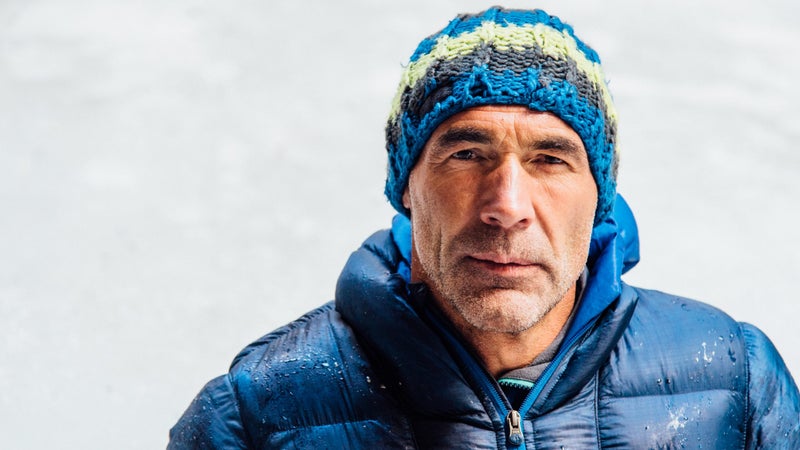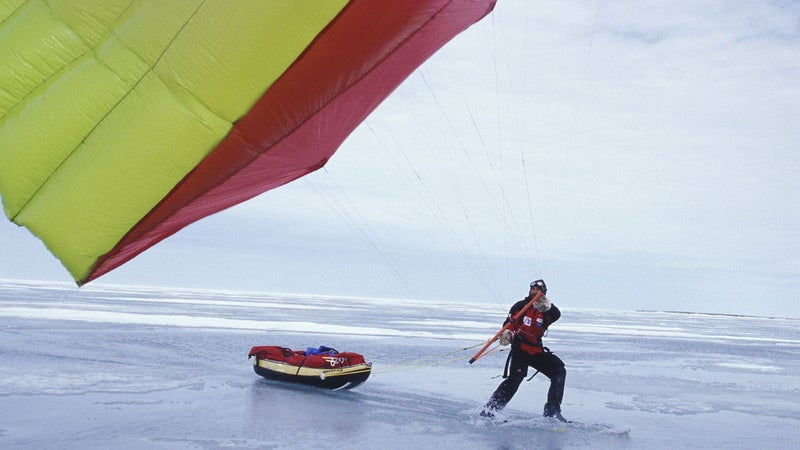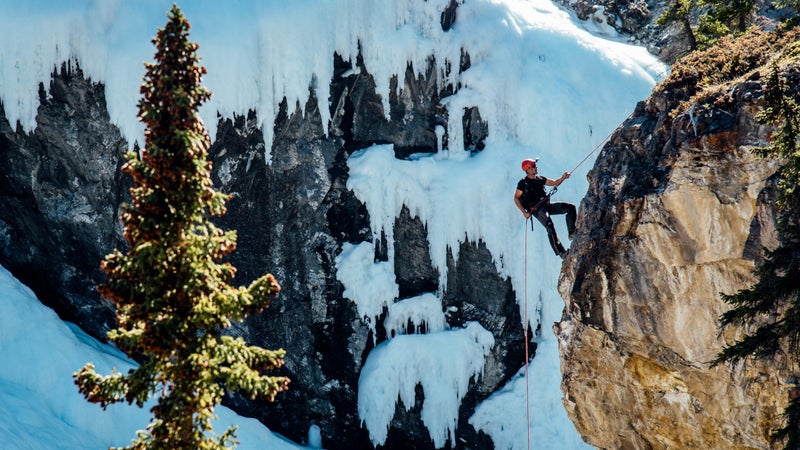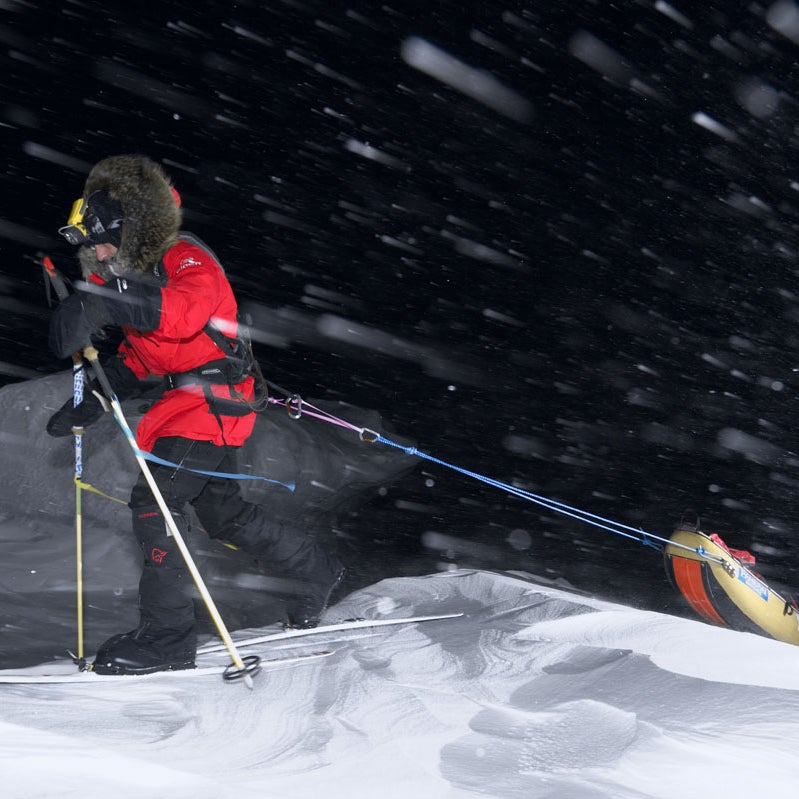He’s been acknowledged by many as the greatest modern-day explorer. After becoming the first man (alongside partner Borge Ousland) to travel to the North Pole without the help of a motor or dogs during winter, Mike Horn took a break by summiting a few 26,000-foot peaks in Pakistan. He swimmed the entire length of the Amazon River, unsupported, and circumnavigated both the equator and arctic circles (again without motors).
Horn’s next adventure will be another global circumnavigation, this time north-to-south, and again un-motorized. Next month, he’ll set sail from Monaco aboard Pangea, his 105-foot aluminum ketch (which he designed himself), pick up supplies and crew in South Africa, then sail to Antarctica, where he plans to kite-ski solo across the entire continent. Rendezvousing with Pangea on the other side, he’ll then sail up to the North Pole via the Bering Strait, where he’ll embark across the ice floes on foot, pulling a sea kayak. Eventually, he’ll make it across to Greenland, where he’ll once again rendezvous with Pangea, then sail back to Monaco, completing the circumnavigation. Horn expects the journey to take a full year, with six of those months spend on foot, crossing the poles.��
What’s the key to a successful polar crossing? Aside from planning, logistics, and a whole lot of effort, it all comes down to food. A lot of food. For his four-month-long Antarctic trek, Horn will be pulling a 450-pound sled, most of which is food. His daily consumption will start at 6,000 calories, increasing to 7,500 across the first week, as the toughness of his task and the conditions he faces increase, and the caloric needs of his body grow to match the challenge. He’ll eventually consume up to 12,000 calories each day.��
That's no easy task. To reach those numbers, Horn uses base foods like muesli and oatmeal as delivery vehicles for high-fat ingredients like honey, malt powder, and olive oil. In addition to mixing olive oil into virtually everything he eats, Horn also freezes it into cubes, which he sucks on between meals, as he moves. He consumes up to a liter of the fatty oil per day. But it’s not all olive oil; Horn also consumes up to 2.2 pounds of homemade chocolate each day. Why homemade? Store-bought chocolate doesn’t have enough calories, so he starts by melting that down, adding cocoa butter, then reforming the new, more nutritionally dense mix into new bars.��

During his polar crossings, Horn is sustaining 60 to 69 percent of his maximum heart rate for months at a time. That range is known in fitness circles as the fat burning zone. But since Horn is trying to get places, not get shredded abs, he needs to replace all the calories he’s burning. The extreme temperatures also add to his body’s need for fats. High-fat foods are the most calorie dense possible, so Horn is conveniently able to serve his body’s needs, and pack the most efficient energy-to-weight foods possible.��
It can’t all be fat though. After all, even polar explorers need to poop. His days start with a breakfast of muesli or oatmeal, mixed with fatty additives. As soon as he’s done with that, he starts snacking on the go, eating nuts and chocolate throughout the day. If he’s got a sweet tooth, he’ll eat brownie batter that has been mixed with olive oil, frozen, and cut into cubes. If he craves something salty, he’ll eat potato chips that have been smashed up, mixed with olive oil, and given the cube treatment too. He also snacks on smoked salmon and lengua (75 percent of beef tongue’s calories are from fat).��
Horn’s evening snack typically consists of more chocolate, now served with rice pudding. He also carries a variety of soups—butter double cream, split pea, and cream of tomato are his favorites— all also mixed with olive oil.��

And then, for dinner, Horn relies on freeze-dried foods, similar to those eaten by backpackers the world over, but here custom-made for him by a company called Trek and Eat. They’re high-calorie, high-fat meals like pasta with salmon, beef Bolognese, and Thai curry. He tells us they’re, “very tasty.”
Horn also uses food for motivation. If he achieves weekly goals for distance covered, he rewards himself with a “bonus bag” that’s loaded with cubes of homemade chocolate. This strategy helps him push through tough sections, keeping himself on schedule.��

If you’ve ever been on an ambitious backpacking trip, then you’ll know that, while eating is a necessity, preparing food can take precious daylight hours away from actually covering distance. Horn’s polar crossings are no different. He spends up to five hours per-day melting snow, cooking, and eating. After about five hours of sleep each night, that leaves him with 14 hours of travel time in the day. Sometimes, even that much isn’t enough.��
While Horn and Ousland were on their historic two-month, pitch-black winter trek to the North Pole, they needed more than 14 hours of travel time each day in order to match their rate of travel to their diminishing food supply. Instead of bailing on their objective, the team instead reset their biological clocks to a 30-hour day, giving them 30 percent more time spent moving, rather than eating or sleeping. Horn attributes their success to this knuckling down. Where most people would have tried to ration their supplies, eating less each day, Horn and Ousland ate more, thereby giving themselves the ability to work harder. Think about that the next time you’re trying to make time on the trail. It may be more food, not less, that makes you faster.��


